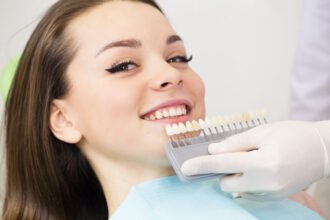Many dentists use updated technologies to improve their services. Lasers are now in the industry to help alter or remove hard and soft tissues in different procedures. Read to know more about this technology, along with information about dentists and patients taking advantage of lasers. What Is Laser Dentistry? As its name suggests, laser dentistry uses lasers to help treat various dental conditions. It also has the potential to be a more comfortable treatment option than other operations that involve the likes of drills and other non-laser equipment. Dentists, like the professionals at Wayzata Dental, use types of machinery that emanate amplified light stimulated by emitted radiation. This narrow beam focuses on areas of concern to hit tissues for altering or removing. The use of lasers can help treat dental conditions like:
- Canker sores
- Gum disease
- Exposed wisdom teeth
- Sleep apnea caused by abnormal throat tissue
- Oral tumors
How Can Lasers Improve Dental Health? Dental clinics may use lasers in different dental procedures, such as laser teeth whitening, detecting tooth decay, and setting restorative materials, like fillings or crowns. Dentists still need to educate themselves before using these machines. Patients should also ask their dentists if laser treatments are the best option for their specific dental concerns. Laser dentistry works by focusing a beam of light on offending areas in the mouth. Lasers can help minimize the risk of human errors, which is prevalent with traditional dental practices. What Are The Benefits Of Laser Dentistry? Laser dentistry promotes several benefits that could be extremely advantageous to both dentists and patients. Some of these benefits are: Precise Equipment Handling Handheld dental equipment needs the steadiness of the hands of dentists. Otherwise, the dental expert may find it challenging to operate on the patient’s mouth, gums, or teeth. Shaky hands can lead to complications during and after dental procedures. Conversely, dentists can use laser technologies to modify or remove offending tissues in the mouth without the worry of being inaccurate. Lasers are precise instruments, so the dentist can operate without damaging healthy tissues. Minimizes Bleeding Despite the narrow appearance of lasers, these beams of light come with high-energy outputs. This light helps clot blood, thereby reducing the risks of bleeding during and after dental procedures. Reduces The Need For Anesthesia Dentists using lasers may no longer find the need to use anesthesia. Dental experts often use anesthetics to help reduce the pain associated with operations, like drilling and incisions. Laser dentistry is less painful than other conventional procedures, thus lessening the need for anesthesia. Reduces Postoperative Discomfort The use of lasers is less invasive than using drills and scalpels. Therefore, patients should feel less pain after procedures. Also, dentists don’t need to apply stitches to openings made during operations. But, the dental professional might still apply stitches on specific or severe procedures. How Did Lasers Change The Way Dentists Work? Modern dentistry may not have a dire requirement for the use of lasers in clinics. But, many patients expect to see services using laser technologies. As per a report from the National Journal of Maxillofacial Surgery, dental clinics began using lasers in operations since the 1960s. Now, many dental clinics implement the use of lasers for several procedures to the advantage of their patients. Since laser dentistry boasts unique characteristics, dentists use these beams of light to perform specific operations. The two types of dental lasers available at the time of writing are:
- Hard Tissue Lasers
These lasers emit beams that are highly absorbable by the calcium phosphate salt called hydroxyapatite, which can be found in bones and teeth. These lasers can be more useful for cutting tooth structure for preparing or shaping teeth for procedures like repairing worn fillings and removing tooth structures.
- Soft Tissue Lasers
Soft tissue lasers have a wavelength that is highly absorbable by hemoglobin and water. These beams are ideal for soft tissue management. Dental clinics can provide services, like sealing blood vessels and nerve endings in the mouth, with the help of soft tissue lasers. Specific dental operations may use one or two types of lasers to generate both hard and soft tissue energies. However, these procedures depend on the patients’ needs. Additionally, some lasers are usable for viewing the insides of teeth as opposed to cutting and shaping hard and soft tissues. These lasers allow dentists to inspect the conditions of teeth ailments that are challenging to see with the naked eye. Are You Ready For Laser Dentistry? Laser dentistry has come a long way, and many dentists are now using this technology to provide better services to their patients. Patients can take advantage of laser dental services to minimize bleeding and pain during operations. Consequently, dentists can use laser technologies to operate with accuracy and reduce the risks of human errors during procedures. However, interested individuals should ask dentists if laser treatment is the best option to treat their dental concerns.








